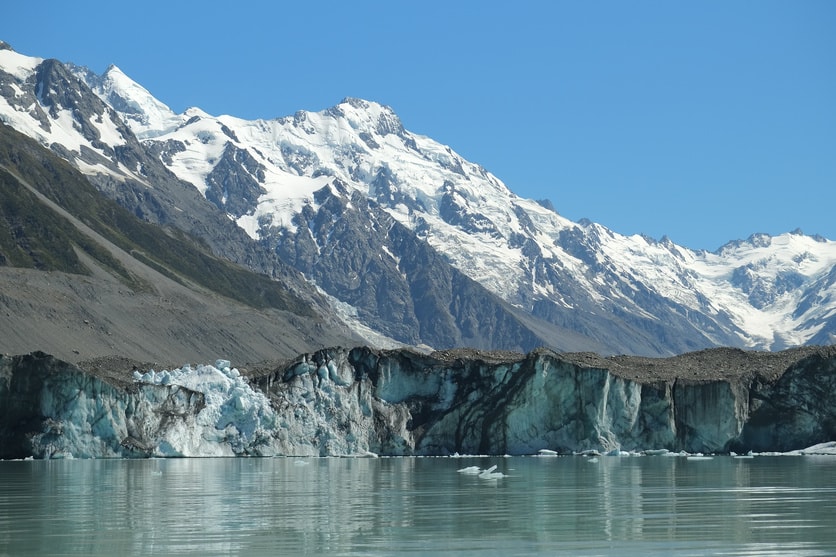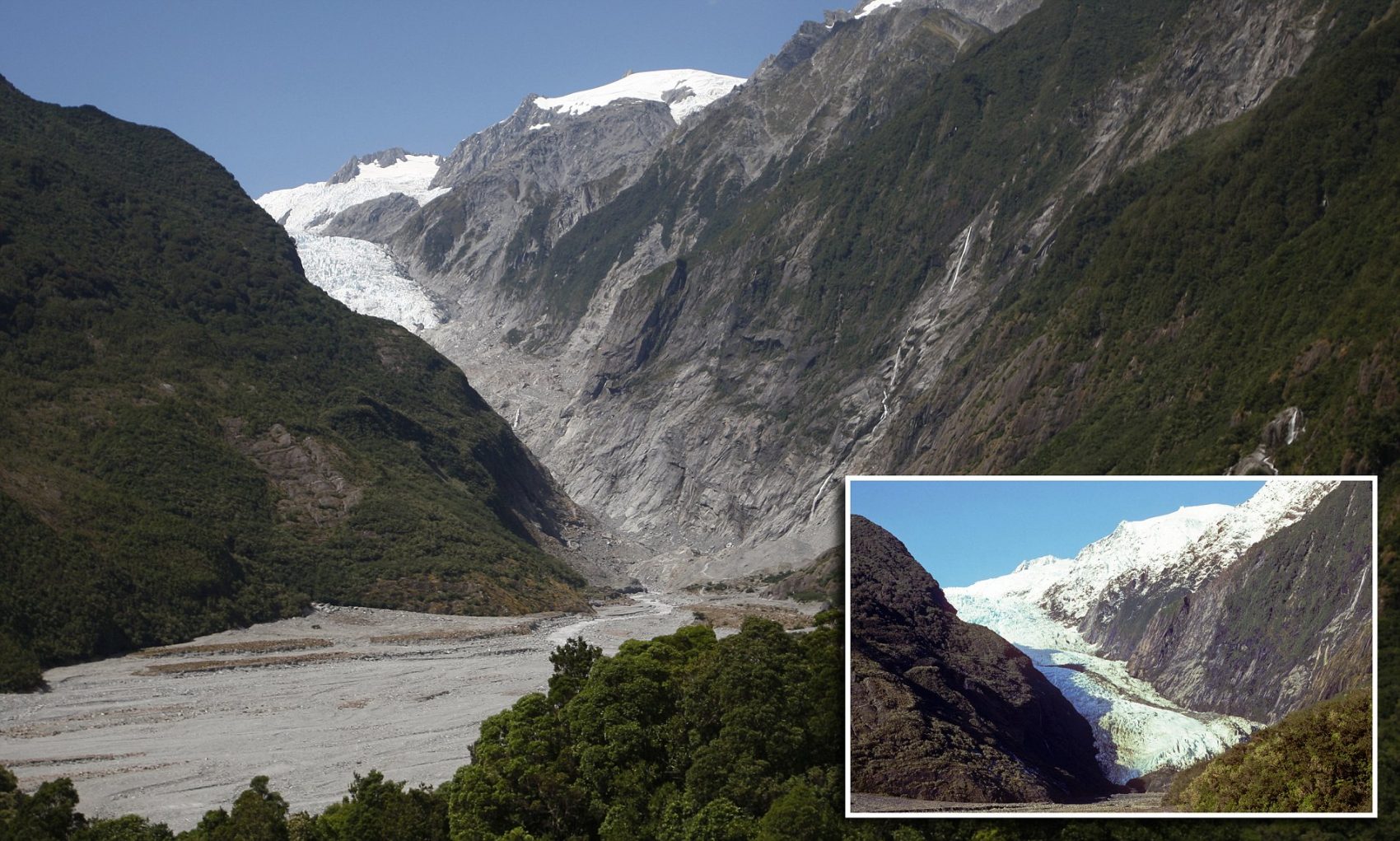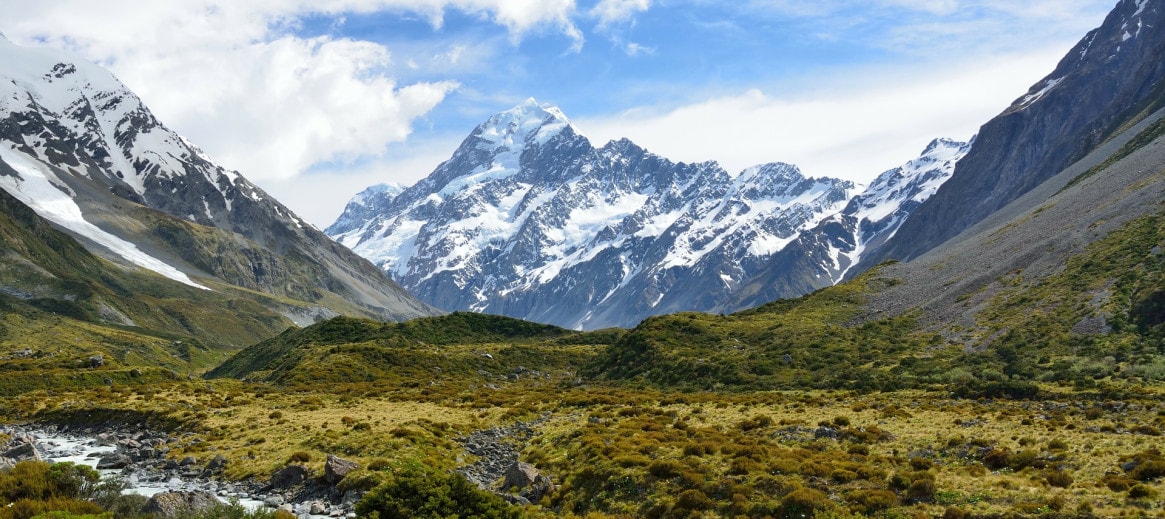
The Southern Alps are the backbone of the South Island of New Zealand and run almost the entire length of the island. They contain the highest peaks in all of Australia/New Zealand, including Aoraki/Mount Cook, the tallest peak at 12,218 ft. In the 1970s, a study concluded over 3,000 glaciers over 1 hectare existed within the range, but that number has shrunk quite rapidly in the modern age.
New Zealand’s glaciers are losing ice at an alarmingly fast rate. Since peak volume was reached around 400 years ago, the Southern Alps have lost nearly 77% of their maximum volume. The rate of loss has accelerated and doubled since that time, effectively meaning the glaciers have lost more ice than they contain today.
“Our results suggest that the Southern Alps has probably already passed the time of peak water or the tipping point of glacier melt supply. Looking forwards, planning must be made for mitigating the decreased runoff to glacier-fed rivers because that affects local water availability, landscape stability and aquatic ecosystems.”
– Dr. Johnathan Carrivick, University of Leeds School of Geography

You may think this is only a problem for New Zealand, and for a country of roughly 5 million, not a big item on their to-do list. Glacial melt affects many aspects of the environment around us. Communities that depend on glacial melt may not have another option in the future. Irrigation projects for growing crops and raising livestock may be shuttered, causing food scarcity, uncertainty. Hydroelectric projects that rely on constant flowing water may not generate the power necessary to electrify the communities nearby. All that clean, fresh glacial water flowing untamed into the sea could be used for drinking water but is now contributing to rising sea levels.
Glacial melt due to climate change isn’t a new problem for New Zealand, and certainly isn’t specific to the country. All over the world, countries are dealing with climate change whether its glacial melt affecting the water supply to snow levels rising causing it to rain where we could once count on snow. These are only two examples of how the World is constantly changing and evolving around us, but we must be constantly thinking of the future and how to better prepare and adapt. Maybe New Zealand will discover a new way to preserve, or at least reduce glacial melt. Maybe they won’t. The future is uncertain, but I for one think we better start taking action soon, before the surrounding environment is forever changed for the worse, and possibly unrecognizable for the future.
